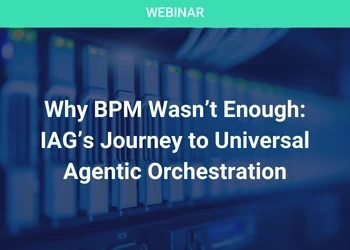Bridging the Gap
Add bookmarkIn any business environment change becomes necessary and learning to embrace a culture that is unknown presents many challenges. ‘Buy-in’ is one of the main obstacles facing companies that have longevity and find shared services foreign. However, organizations need to focus on the ultimate goal — success — which is the catalyst for improvement across all areas and levels of a business. Companies that have penetrated the shared services space must continue to assess needs, communicate openly, plan effectively, and execute best practices strategies that will ensure continued success.
"The primary goal is performance and productivity using best practices on a transparency (sharing of information from executive to staff) level," says Marci Goldshlack, director of corporate training, Philadelphia Workforce Development Corporation. If companies do not train staff properly, the motivation goes away and workers quit, she notes.
"Consistent follow-up, training, development, and recognition of changes, such as impact on people and the business are necessary factors of fostering improvements within the workplace," Goldshlack says. "A company is only as good as the information it provides to employees and clients. The greatest gap is making it work."
Goldshlack says making training and development a core Human Resources initiative is a fundamental part of the best practices process and should be top priority. She adds that if companies ensure workers are proficient to handle the job, it would improve services. As a first step, Goldshlack recommends companies recruit the best people with the right skills for the organization and specific job areas. Second, train them to stay by providing effective tools to help them improve their productivity on the job. Next, ensure consistency at all levels including clients, vendors, staff, upper-, middle-, and lower-management, to bridge the gap.
"Training is about performance and productivity. Give people the right skills and knowledge to perform their jobs. When you train people how to get the job done, they would like what they do and be motivated." Furthermore, if you are able to identify your top performers and give them additional responsibilities, a solid succession plan will be assured, Goldshlack says.
Goldshlack believes it is crucial for an organization to have a training and development expert in-house to help the company identify any common gaps that could prevent it (the company) from moving forward. Once a problem is identified, that person would be readily available to implement a specific strategy and develop applicable tools to narrow the gap. Goldshlack advises that companies put strong recruitment, retention, and succession plans in place and use them on an ongoing basis so workers can develop and improve their skill sets.
Meanwhile, company executives must understand they need to find ways to boost employees’ morale and motivation, Goldshlack says. Business executives need to treat employees fairly, with courtesy and respect.
"Often, upper management are not concerned about low-level employees, and they need to be." People leave jobs if they are unhappy and feel unappreciated; the move could negatively affect a company’s reputation, she cautions.
"You need people to say, they like working for your company," she says, adding that "people don’t leave people, they leave organizations".
Similarly, corporations need to foster unity amongst all levels of management, delegate responsibility accordingly and assess productivity and the bottom-line regarding the company’s specific needs and ROI. Goldshlack believes companies need to take a look at what is working within their establishments and try to enhance it.
"People repeatedly look at what’s not working, but that needs to be put on the back-burner," she advises: if companies concentrate on the positive, sometimes what’s not working would diminish or disappear altogether and be replaced by a more effective tool.
Marci Goldshlack (mgoldshlack@pwcd.org) is the Director of Corporate Training for Philadelphia Workforce Development Corporation, in Philadelphia, Pa. PWDC is a non profit that promotes opportunities for job seekers and employers by actively leading and implementing quality workforce development activities. Goldshlack has over 25 years experience as a corporate trainer and educational consultant, meeting management and employees’ needs for organizations, both for-profit and non-profit. She is also a member of ASTD and is a certified Master Trainer with a diploma in training and development. As a member of IACET, Goldshlack is able to award Continuing Education Units for approved workshops.





















